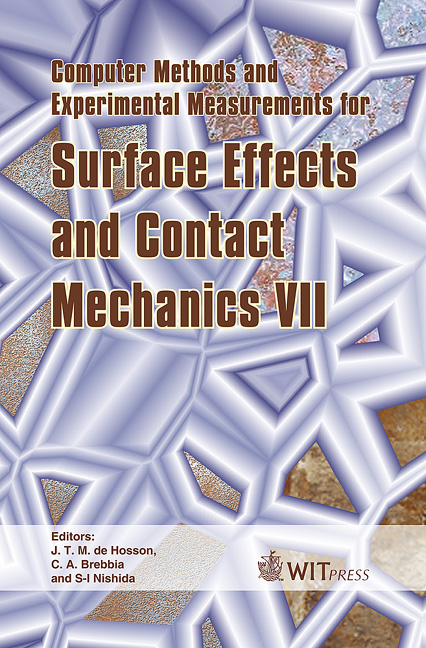Wave Amplitude And Frequency Seen At Explosively Welded Copper/copper Interfaces
Price
Free (open access)
Transaction
Volume
49
Pages
9
Published
2005
Size
1,510 kb
Paper DOI
10.2495/SECM050031
Copyright
WIT Press
Author(s)
G. A. Walsh, O. T. Inal, D. H. Lopez & P. F. Gerity
Abstract
Experiments involving the explosive welding of copper plate to copper plate were performed using a 22 factorial experimental design with three replicated center points. Kinetic energy (in the form of charge size) and accelerating distance (in the form of standoff distance) were the variables. Each variable was tested at three levels. Responses observed were wave amplitude and wavelength seen at the weld interface, which were measured using optical microscopy. Keywords: explosive welding, wave interface response, designed experiment. 1 Introduction Explosive welding has been used extensively in commercial and military applications over the past five decades. In essence, it is a fusion welding process in which an explosively driven plate (the flyer plate) impacts the surface of a stationary plate (the base plate) with enough energy to create a jetting action, strip both surfaces clean and create a bond between the two metals [1]. There are two types of interface which may be exhibited after an explosive weld is performed: straight and wavy [2]. When properly welded, the weld interface should be stronger than the weaker material, however, wavy interfaces are generally considered mechanically superior to straight interfaces, as more surface area is bonded [2]. However, larger waves are indicative of more energy delivered to the interface by the flyer plate, and this increase in energy leads to an increase in temperature at the interface. The temperature generated by the collision of the two plates may be of sufficient magnitude to cause whole or partial melting of one or both of the metals at the interface. This can lead to failure to weld (in the case of melting across the entire surface) or pockets of trapped molten metal within the weld which cool slowly forming regions of cast
Keywords
explosive welding, wave interface response, designed experiment.





